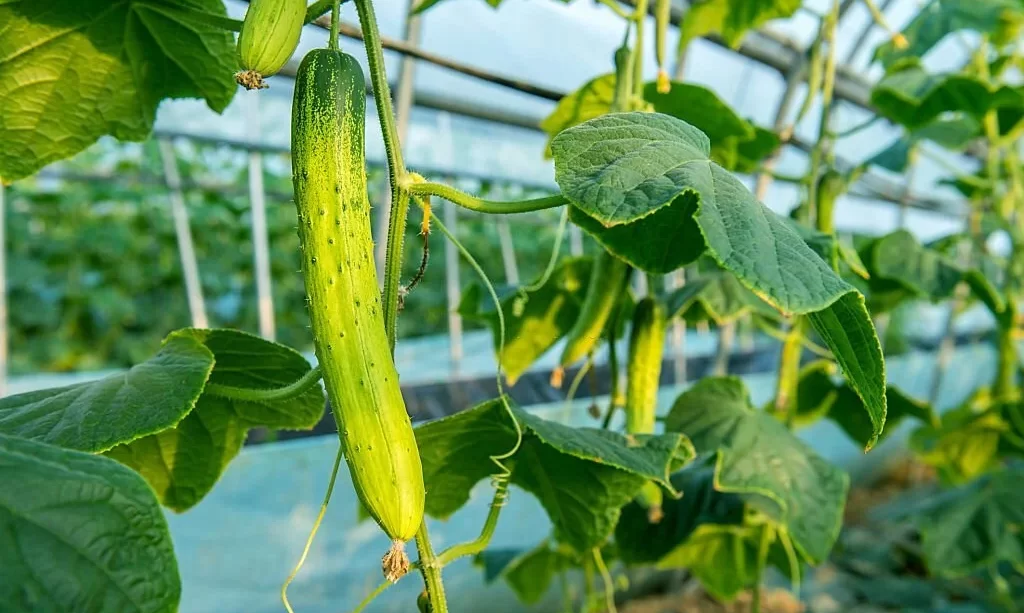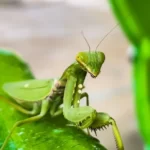Yellow cucumbers might seem like an exotic twist on a classic vegetable, but they’ve been gaining popularity for their unique appearance and potential culinary uses. In this article, we’ll explore the intriguing world of yellow cucumbers and answer the question, “Can you eat a yellow cucumber”?
We’ll delve into their safety, taste, nutritional benefits, and even offer some tips on how to grow them in your own garden. By the end, you’ll have a better understanding of this vibrant vegetable and how to make it a part of your culinary adventures.
- Distinct Appearance – Lemon cucumber’s mild and sweet flavor has none of the typical cucumber bitterness. Its flavor and unusual appearance make it a perfect slicing cucumber.
- Prolific – Easy to Grow, high yielding, and more tolerant of cooler temperatures than other cucumbers. 75 days to maturity.
- Grow Now or Later – Plant now or store for future growing seasons. Will remain viable for years if stored in a cool dry location. Each packet has instructions for saving seeds so you can perpetuate your harvest and share with others.
- The Info You Need to Grow – The Non GMO Lemon Cucumber Seeds are packed in a beautiful paper packet with instructions for successful growing and germination in your home garden. Each package also has instructions for saving seeds after harvest. Getting started is simple for both beginner and experienced gardeners.
- Small American Family-Owned Business – We’re committed to always providing fresh, high-quality lemon cucumber seeds for you to plant now or to store for future growing seasons. We pledge to sell only safe, non-hybrid non-GMO heirloom seeds that are always open-pollinated, untreated, and tested to ensure the best germination rates. They will remain viable for years if stored properly in a cool dry location.
What Are Yellow Cucumbers?
Yellow cucumbers, also known as lemon cucumbers, are a delightful variant of the traditional green cucumber. They are typically small, round, and, as the name suggests, bright yellow in color. These cucumbers are not only visually appealing but also have a mild and slightly sweet flavor, setting them apart from their green counterparts. Yellow cucumbers are a part of the Cucumis sativus family, just like green cucumbers, making them closely related and equally safe to eat. Their unique appearance and taste make them a versatile addition to various dishes, adding a pop of color and flavor to your meals.
Are Yellow Cucumbers Safe to Eat?
You might wonder if these vibrant yellow cucumbers are safe for consumption, given their unusual color. The good news is that yellow cucumbers are indeed safe to eat, just like their green counterparts. They belong to the same cucumber species, Cucumis sativus, and share similar characteristics. However, when eating any cucumber, it’s essential to wash them thoroughly to remove any contaminants or residues. Also, ensure that the yellow cucumber you’re about to enjoy is fresh and free from signs of spoilage. By following these basic food safety practices, you can savor the taste and benefits of yellow cucumbers without worries.
The Taste and Texture of Yellow Cucumbers
Yellow cucumbers offer a delightful departure from the traditional green variety in terms of both taste and texture. These cucumbers have a mild, slightly sweet flavor that’s often compared to a subtle lemony essence, which is why they’re sometimes called “lemon cucumbers”. The taste is refreshing and makes them an excellent choice for those who prefer a sweeter, less bitter cucumber experience.
In terms of texture, yellow cucumbers are crisp and crunchy, much like green cucumbers. They feature a thin, tender skin and a juicy, seed-filled interior. Their texture makes them perfect for fresh salads, snacking, or even pickling. So, if you’re looking for a cucumber with a unique taste and enjoyable crunch, yellow cucumbers are an enticing option to explore in your culinary adventures.
Culinary Uses of Yellow Cucumbers
Yellow cucumbers can bring a burst of color and flavor to your culinary creations. Their unique appearance and mild, slightly sweet taste make them a versatile ingredient. Here are some popular culinary uses for yellow cucumbers:
- Fresh Salads: Yellow cucumbers add a pop of color and a refreshing taste to salads. You can slice them thinly and mix them with other veggies for a vibrant and crunchy salad.
- Pickles: Their mild flavor makes yellow cucumbers an excellent choice for making homemade pickles. They can take on the flavors of the brine and spices, creating a delightful pickle.
- Salsas: Dice yellow cucumbers and mix them with tomatoes, onions, and fresh herbs to create a unique and flavorful salsa.
- Snacking: Enjoy them as a healthy snack by slicing or cutting them into sticks. Their natural sweetness can satisfy your cravings.
- Garnishes: Yellow cucumber slices or wedges can be used as garnishes for various dishes, adding an eye-catching element to your presentation.
Nutritional Benefits of Yellow Cucumbers
Yellow cucumbers offer not only a burst of flavor but also some nutritional benefits. They are low in calories, making them a great choice for those looking to manage their weight. Here are some of the nutritional advantages of yellow cucumbers:
- Hydration: Cucumbers, including the yellow variety, are primarily composed of water, which can help keep you hydrated, especially in hot weather.
- Vitamins and Minerals: Yellow cucumbers contain essential vitamins and minerals, including vitamin K, vitamin C, and potassium, which are important for bone health and immune support.
- Fiber: They are a good source of dietary fiber, aiding in digestion and promoting a feeling of fullness.
- Antioxidants: Cucumbers, in general, are rich in antioxidants, which help combat oxidative stress in the body.
Incorporating yellow cucumbers into your diet can be a delightful way to enjoy a variety of dishes while reaping their nutritional benefits. Their unique taste and visual appeal make them a standout addition to your meals.
How to Grow Yellow Cucumbers
If you’re intrigued by yellow cucumbers and want to savor them fresh from your garden, here’s how to grow them:
- Choose the Right Variety: Start by selecting a yellow cucumber variety suitable for your climate and gardening space. Popular choices include Lemon Cucumbers and Crystal Apple cucumbers.
- Planting: Plant yellow cucumber seeds or seedlings in well-drained soil after the last frost has passed. Make sure they receive plenty of sunlight for optimal growth.
- Watering: Keep the soil consistently moist, but avoid overwatering, which can lead to disease issues. A soaker hose or drip irrigation system can be beneficial.
- Support: Yellow cucumber plants often benefit from trellises or cages to support their vines as they grow.
- Harvest: Harvest yellow cucumbers when they reach the desired size, which is usually when they are 2-3 inches in diameter. Regular harvesting encourages more fruit production.
Conclusion
In conclusion, the answer to “Can you eat a yellow cucumber?” is a resounding yes. Yellow cucumbers are not only safe to eat but also offer a delightful twist to your culinary adventures with their mild, slightly sweet taste and eye-catching appearance. Whether you enjoy them in salads, as pickles, or as a healthy snack, yellow cucumbers can bring a burst of color and flavor to your meals. And for those with green thumbs, growing yellow cucumbers in your garden can be a rewarding experience, providing you with fresh, homegrown produce to enjoy. So, go ahead, explore the world of yellow cucumbers, and add a touch of sunshine to your plate.




